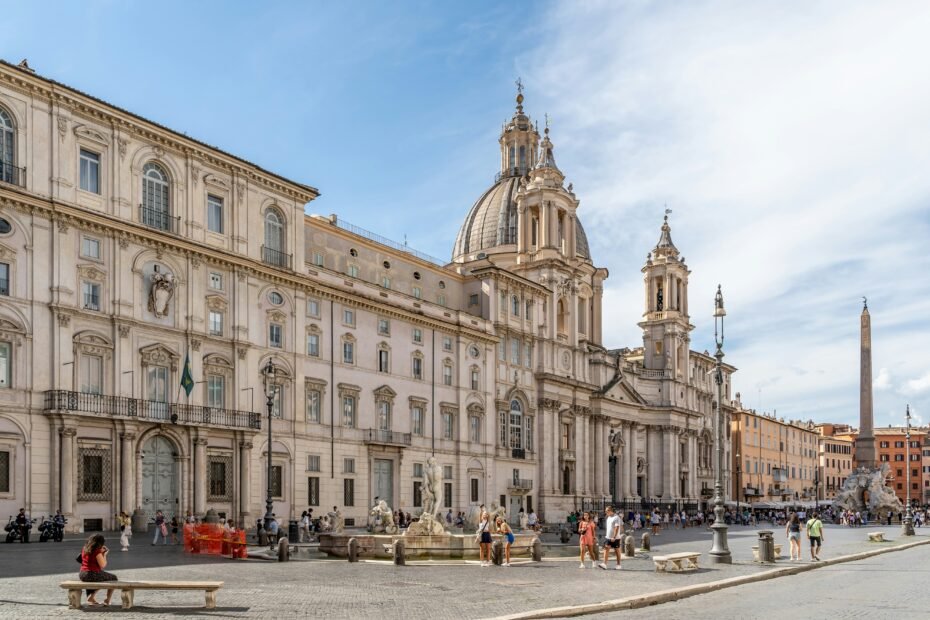Piazza Navona is one of the most famous and beautiful squares in Rome, Italy, and is a must-visit destination for tourists. It offers a blend of history, art, architecture, and vibrant modern culture. Here’s everything you should know:
Historical Background
- Ancient Origins: The square follows the shape of an ancient Roman stadium, the Stadium of Domitian, built in the 1st century AD. It was originally used for athletic games and chariot races.
- Transformation: In the 15th century, the stadium was paved over and became a public square, retaining its elongated, oval shape.
Architectural Highlights
- Fountains
- Fontana dei Quattro Fiumi (Fountain of the Four Rivers):
- Designed by Gian Lorenzo Bernini in 1651.
- Features a large obelisk surrounded by four river gods representing the Nile, Ganges, Danube, and Río de la Plata.
- Fontana del Moro:
- Located at the southern end, with a Moor wrestling a dolphin, also designed by Bernini and Giacomo della Porta.
- Fontana del Nettuno:
- At the northern end, featuring Neptune battling sea creatures, designed by Giacomo della Porta.
- Fontana dei Quattro Fiumi (Fountain of the Four Rivers):
- Church of Sant’Agnese in Agone:
- A Baroque masterpiece designed by Francesco Borromini.
- Located on the western side, it honors Saint Agnes, who was martyred on the site.
- Palazzo Pamphilj:
- A grand palace that now houses the Brazilian Embassy.
- Originally commissioned by Pope Innocent X, who played a major role in the square’s Baroque transformation.
Activities and Attractions
- Street Performers and Artists: The square is filled with musicians, painters, and entertainers, especially during the evening.
- Cafés and Restaurants: Enjoy Italian cuisine and people-watching at the outdoor cafés and restaurants that line the square.
- Christmas Market: During the holiday season, the square transforms into a festive market with stalls selling crafts, gifts, and seasonal treats.
Tips for Tourists
- Best Time to Visit: Early morning or late evening for fewer crowds. The square is beautifully lit at night, offering a romantic ambiance.
- Guided Tours: Consider a guided tour to learn about the history and art in depth.
- Nearby Attractions:
- Pantheon (10-minute walk)
- Campo de’ Fiori
- Castel Sant’Angelo
- Local Events: Check for festivals or events, as Piazza Navona is often a central venue.
Practical Information
- Admission: The square is free to enter and open 24/7.
- Accessibility: The area is pedestrian-friendly, but cobblestone streets may pose challenges for wheelchairs and strollers.
- Public Transport: Accessible by buses or a short walk from nearby landmarks.
Fun Facts
- The rivalry between Bernini and Borromini is often exaggerated in stories about the square. Allegedly, the River God’s hand in Bernini’s Fountain of the Four Rivers is raised to “shield his eyes” from Borromini’s Church of Sant’Agnese, though this is a myth.
- Piazza Navona appeared in the film Angels & Demons, adding a layer of modern pop culture significance.
Piazza Navona is a delightful blend of history, culture, and entertainment, making it an unforgettable stop on your Roman adventure.
